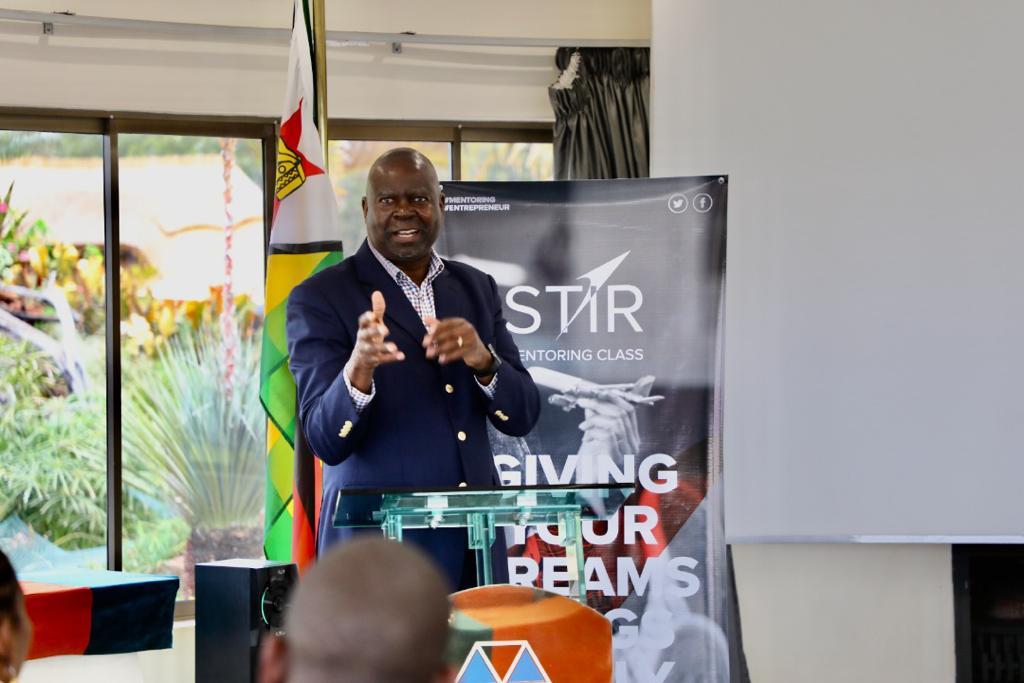
A KILOMETRE from Norton’s New Donnington Farm pupils from Dudley Primary School swapped books for political posters as they lined up along the Harare-Bulawayo Road to welcome guests to an event they would not attend.
Carrying posters of President Robert Mugabe and King Mswati III, the pupils were extolling the virtues of the 85-year-old president with their teachers directing operations.
It was last Thursday and another day of schooling had to be cut to welcome the Swazi king.
Not out of choice, the pupils patiently sang and waved the posters braving the hot weather.
So sweltering was the heat that Zanu PF Mashonaland West provincial chairperson John Mafa was saved from a near fall by Local Government minister Ignatious Chombo as he patiently waited for Mugabe and Mswati’s arrival. Â
Shortly after lunch, farm workers at Donnington looked in awe as the approaching convoy of offroader 4x4s left a cloud of dust that engulfed their compound.
Before long, they saw Mugabe and Mswati disembarking from a Toyota Land Cruiser V8.
- Chamisa under fire over US$120K donation
- Mavhunga puts DeMbare into Chibuku quarterfinals
- Pension funds bet on Cabora Bassa oilfields
- Councils defy govt fire tender directive
Keep Reading
Also making part of the procession was Zimbabwe Defence Forces commander Constantine Chiwenga who travelled in the same car with Defence minister Emmerson Mnangagwa.
Four steel corrugated grain storages silos standing tall and close to farm brick houses were the attraction that had brought the octogenarian leader and the king to this farm.
But who owned this 4 000ha piece of land that drew the Swazi leader, Zanu PF stalwarts and service chiefs to an event Mugabe described as “rare and historic”? The embattled Reserve Bank governor Gideon Gono owns the farm.
For the farm labourers, meeting the president was restricted to election campaign time. But this time Mugabe and a band of invited guests were at the farm for a different cause.
Earlier in the day Mugabe and Mswati, together with their spouses, had visited a Mazoe farm belonging to the first family.
The commissioning of the four silos by the Swazi leader bolstered Mugabe’s recent pronouncement that Gono would not be forced out of the central bank as demanded by the Morgan Tsvangirai-led MDC.
More interestingly, these silos were built at a time when GMB grain storage facilities in nearby Chegutu and those in Banket and Lions Den stand empty.
Recent official statistics indicate that grain output would increase slightly from last year’s although it falls far short of meeting the estimated two million metric tonnes of annual consumption.
GMB boss Albert Mandizha was this week quoted saying the loss-making parastatal is now charging a paltry US$3 tonne in storage space at its silos spread across 14 depots. Gono spent US$40 000 on each GSI grain storage silo at his farm.
But Gono, speaking to journalists before the start of the commissioning event, said the silos were part of his long-term plan to position the farm project for intense competition for stock feeds. He added that he had plans to partner with other farmers neighbouring his U-shaped farm.
According to Gono, the late former defence forces chief Vitalis Zvinavashe acquired a farm nearby.
According to Gono the farming project is “financed and owned by a consortium of six farming experts” with him as chairman. Despite boasting of constructing a dam, Gono and his partners had not planted any winter wheat at the time of the visit.
Unlike the Nicole family of Banket that established huge silos towering along the Harare-Chirundu road more than a decade ago, last Thursday’s event was hyped as a state event.
Gono took the occasion to vindicate himself from any fraudulent activities with state coffers during his first term of office when he announced that regional and international banks had funded his farming project.
“The first phase involves a capacity of 8 000t between the four silos with the 15 000t silo completing the programme early next year,” said Gono in a written statement.
“This capacity will be adequate for our poultry feeding needs. Stanbic/PTA Banks have supported this vision since the beginning of 2007. The silos have been constructed at an average cost of US$40 000 each. The operation boasts an average of 4 500 beasts acquired with the farm in 2001/2 with support from Barclays and proper management has seen us maintaining the same level stock of cattle even though we do sell a sizeable quantity each year for slaughter.”
To dissociate his project from the corrupt activities that marred the government farm mechanisation programme, Gono claimed that the farm was mechanised from “day one of purchase” before the government exercise.
Seemingly aware of intensifying dispute over Gono’s tenure, Mswati argued that the farm project justified the central bank governor’s position.
“I am glad to see that the man who is implementing this (silo project) farm is governor of the central bank. I understand why he is the governor,” Mswati said.
His remarks came barely two weeks after Tsvangirai announced that he had referred the re-appointment of Gono and Attorney-General Johannes Tomana to Sadc.
After the commissioning of the silos of which one of them was less than half filled with soya beans, invited guests drove for close to five kilometres down a gravel road towards the farmhouse.
Along the way was a stretch of cultivated land with no crops grown on it and part of the cattle herd grazing.
Security screening at the main gate to the house stopped scores of singing Zanu PF supporters from being lavished with the food and wine that was served at what looked like an old tennis court. Â
Apart from agriculture, Gono is understood to have business interests in the media and petroleum industry.
BY BERNARD MPOFU











